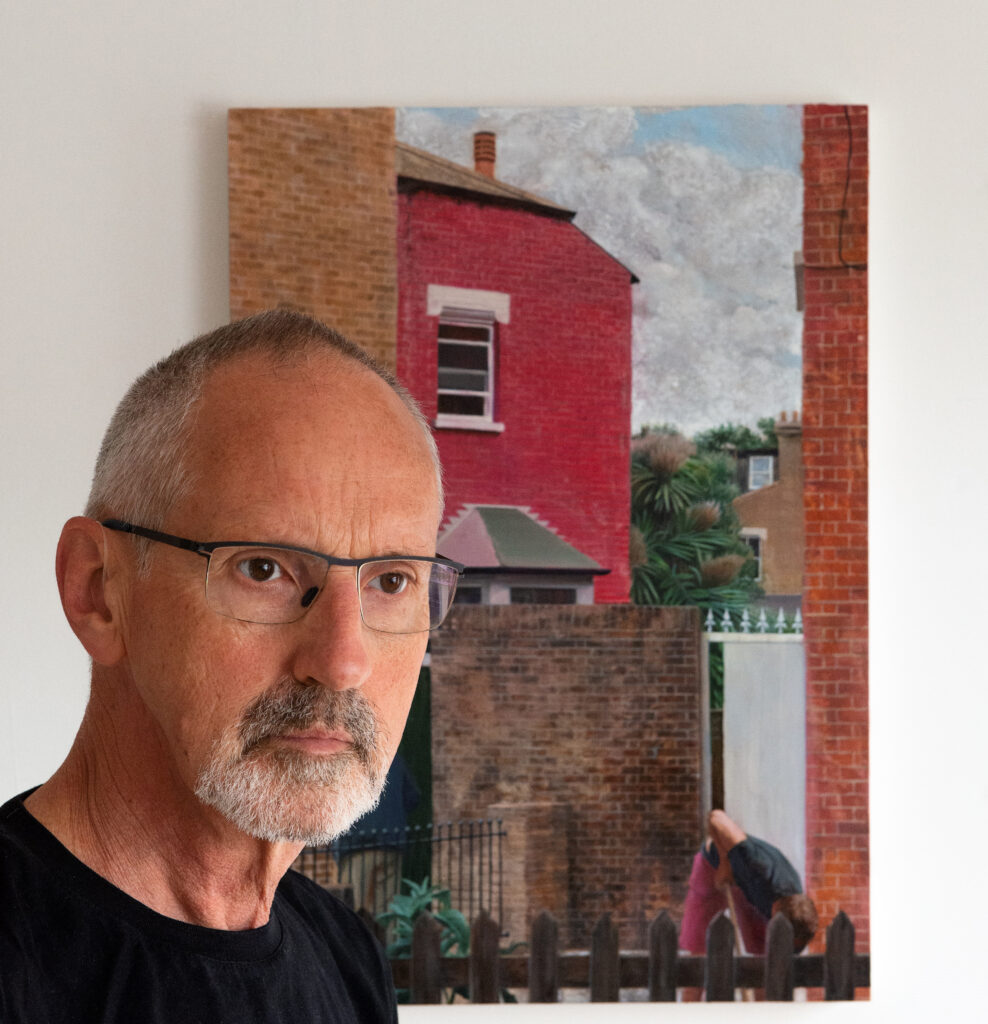David Edmond Painter / Textile Artist
You worked as a designer before starting you painting practice. Does this have any bearing on your paintings?
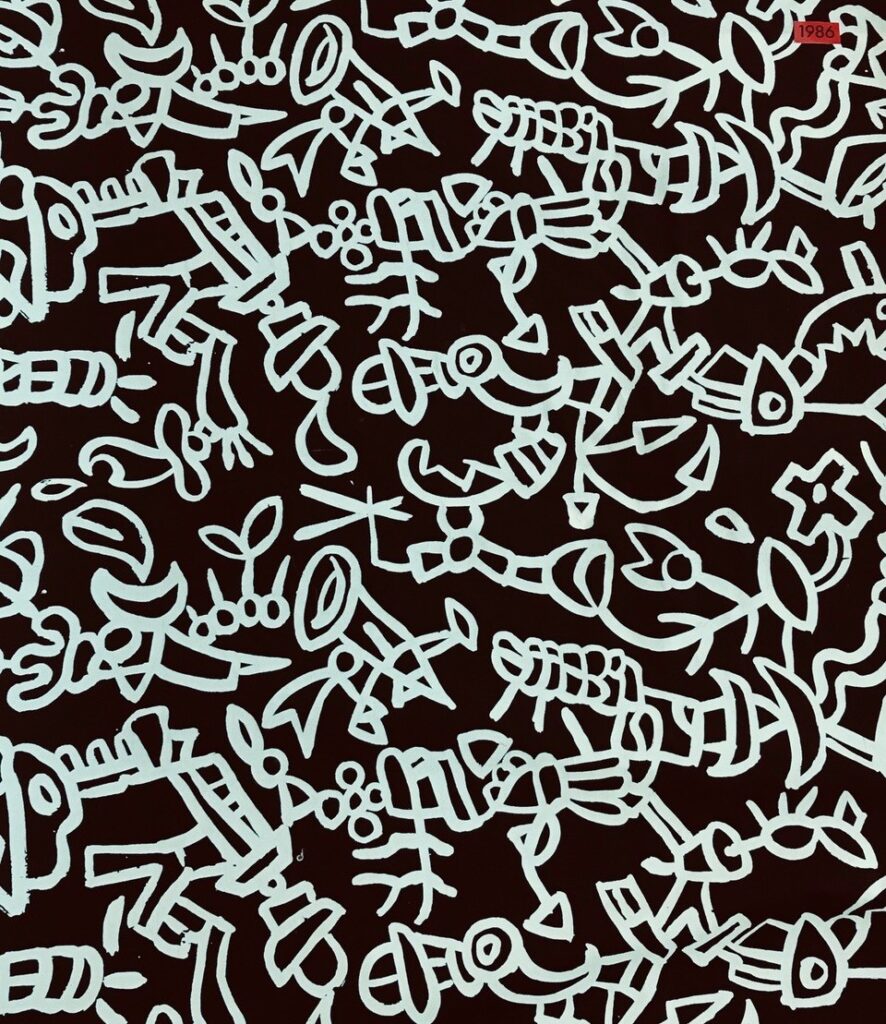
1986 textile collection
I ran my own international printed textile business for many years before turning to painting in 2009, personally producing 150 to 300 speculative designs a quarter. My customers spanned across both fashion and furnishing and my designs had to reflect that in terms of style, scale, and subject matter (floral, geometric, textural, conversational etc.). The range of interests and skills that this developed is reflected in my approach to painting in terms of subject matter and techniques, though not in terms of volume of output!
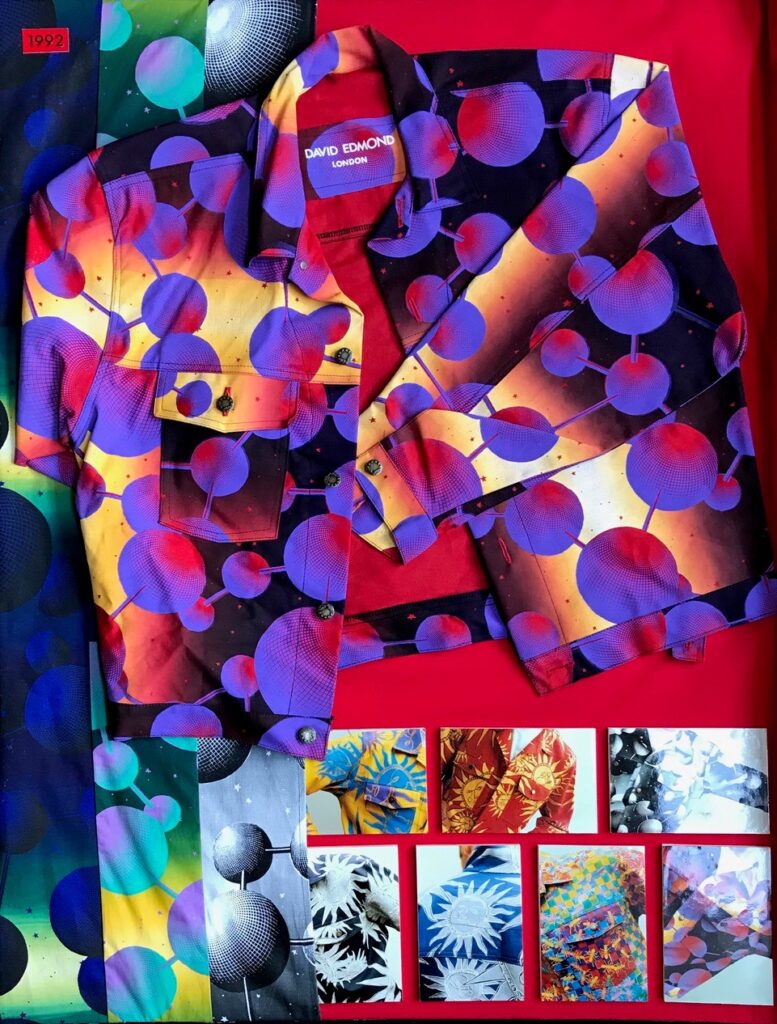
1992 Textile and Clothing collection
I do like to continue to challenge my practice and abilities and see the broad practices of Michael Andrews and David Hockney as something to emulate. Starting my painting practice late means I have a lot to do in the time I have and for this reason I work on 3 to 4 series of paintings at the same time.
Across your range of painting practice, do you think there is a unifying element?
Yes, absolutely. The one overriding quality that I want in my paintings is a sense of quietness. Additionally, another aspect of my work is that though my paintings are figurative I want them to have strong abstract composition qualities.
Take two of your works where you have painted people at the beach. They are tiny dots in huge landscapes why?
My beach painting series stem from photographs I took of Coney Island beach, New York. Looking out from the boardwalk, the beach, sea and sky suggested a painting of a landscape reduced to simple banded blocks of colour. I paint the figures in small but at slightly different scales to help give a sense of space with subtle perspective. The figures are quite closely observed I want them to have personality and give the viewer possible narratives to play with. My initial paintings in this series depicted the sparse thin line of figures that start populating the shoreline in the quiet of the morning.
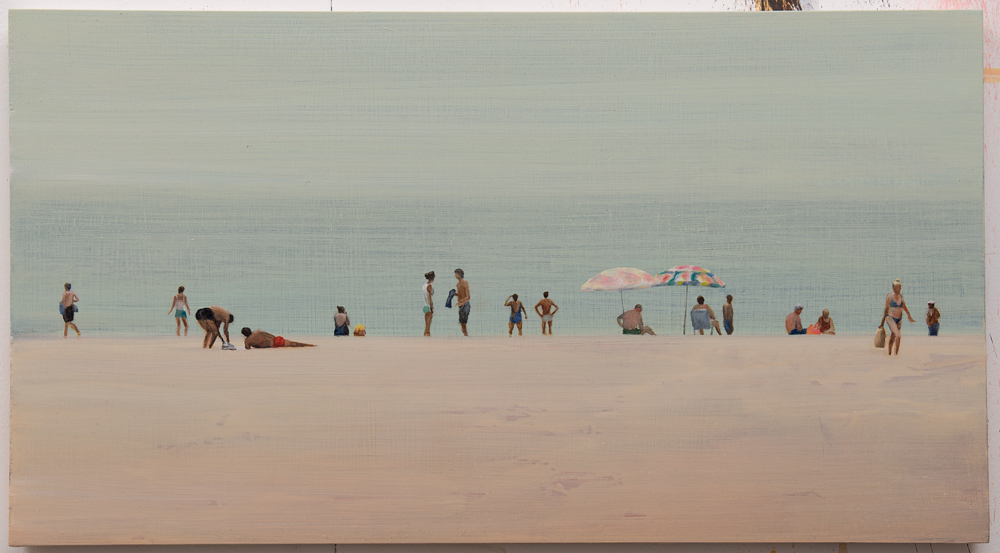
Beach 2.3 – Oil on Panel – 39×70 cm
It’s fascinating how different local cultures, politics (small p), aspirations and prosperity are all evident and acted out on the liminal spaces of beaches.
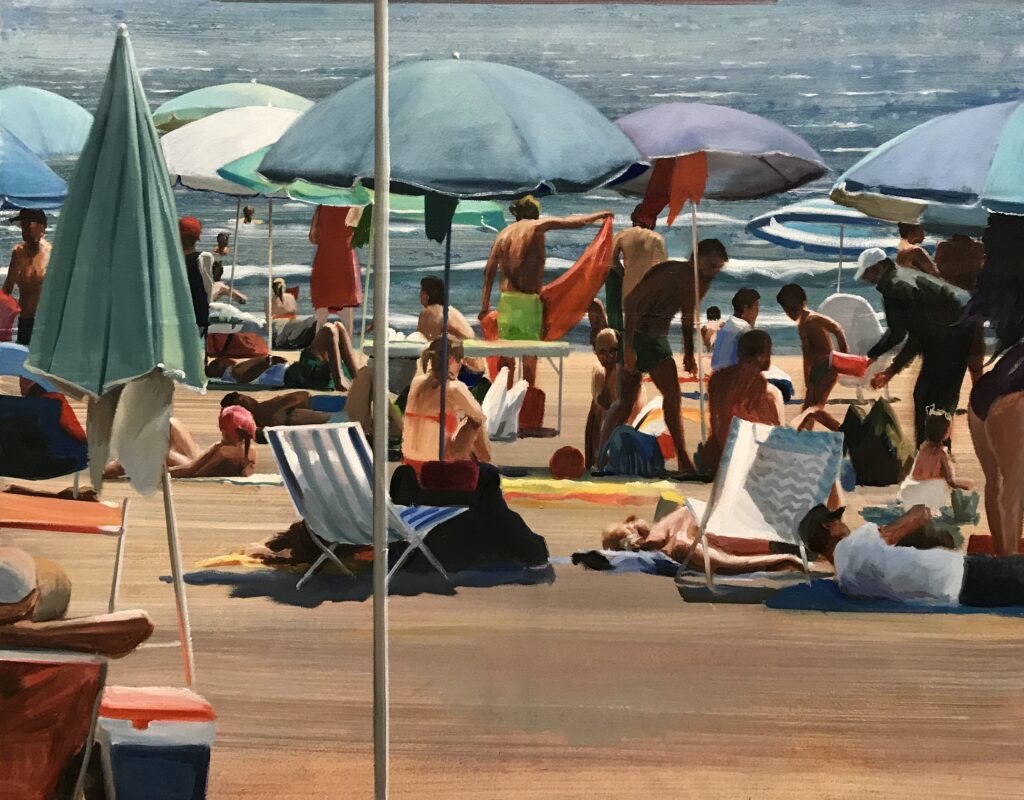
Beach 6.1 (Carrara) – Oil on Canvas – 76×91 cm
For example, the Italian beach club culture with their ordered ranks of loungers and sunshades are different from the British haphazard arrangement of towels and windbreaks. I take inspiration from this for this ongoing series of paintings.
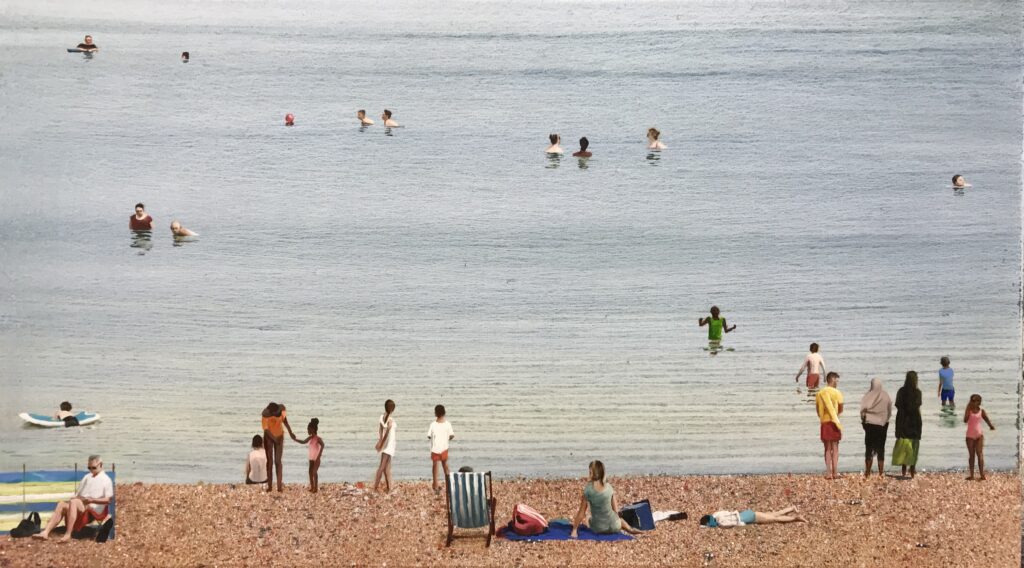
![]()
![]() Beach 2.3 – Oil on Panel – 39×70 cm
Beach 2.3 – Oil on Panel – 39×70 cm
Your series, ‘Street Paintings’ are more abstract discuss this series and the importance of shape and shadow in these works.
Given that the city is an environment of geometric ordered disorder, and that I live in London, I think it’s inevitable that I would try and capture that. I carry a camera everywhere with the intention to collect images and ideas for future paintings. I search obliquely for the familiar but overlooked that borders the figurative with the abstract. There are piles of prints of these in my studio which I sometime work directly from but often extract elements and reassemble them to make a painting.
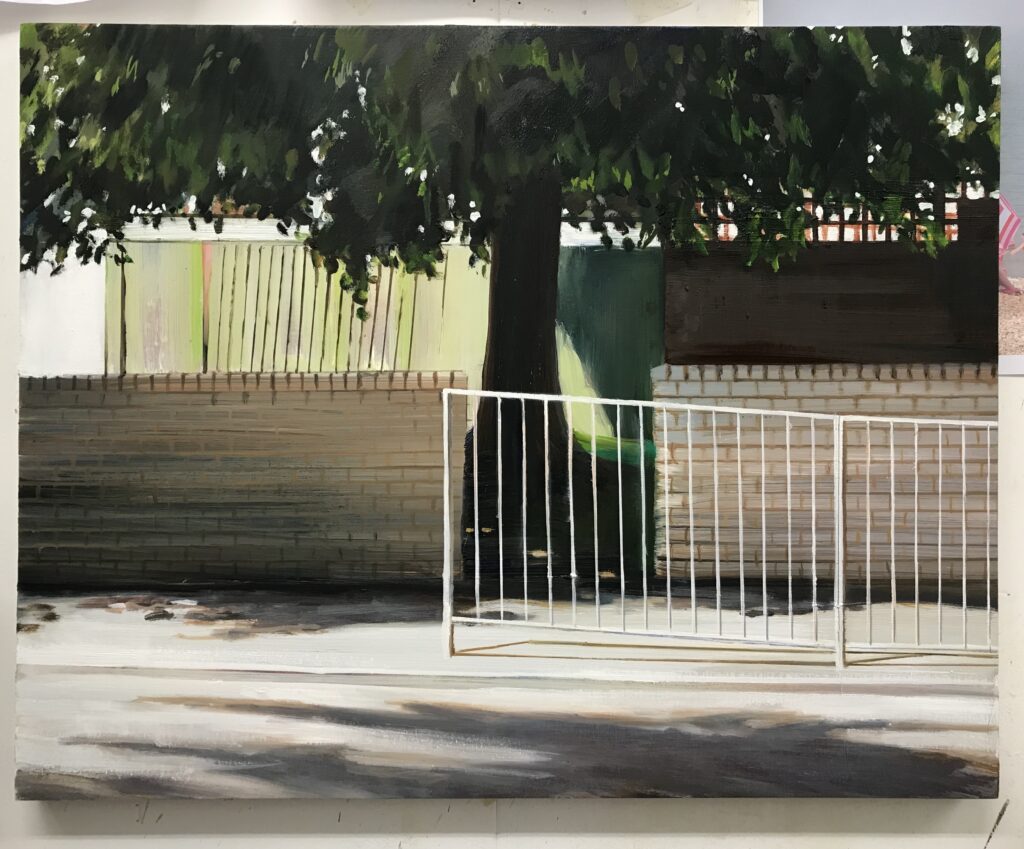
Street Painting 12 – Oil on Panel – 48×61 cm
I’m especially drawn to work that balances figuration, abstraction and the painterly. For instance, the work of Milton Avery, Richard Diebenkorn, Mama Anderson and Hurvin Anderson all have these qualities. My Street Paintings are closer to the photograph than these painters, but the abstract considerations are similar. Wolfgang Tillmans photographs have also influenced this body of work with their strong abstract qualities.
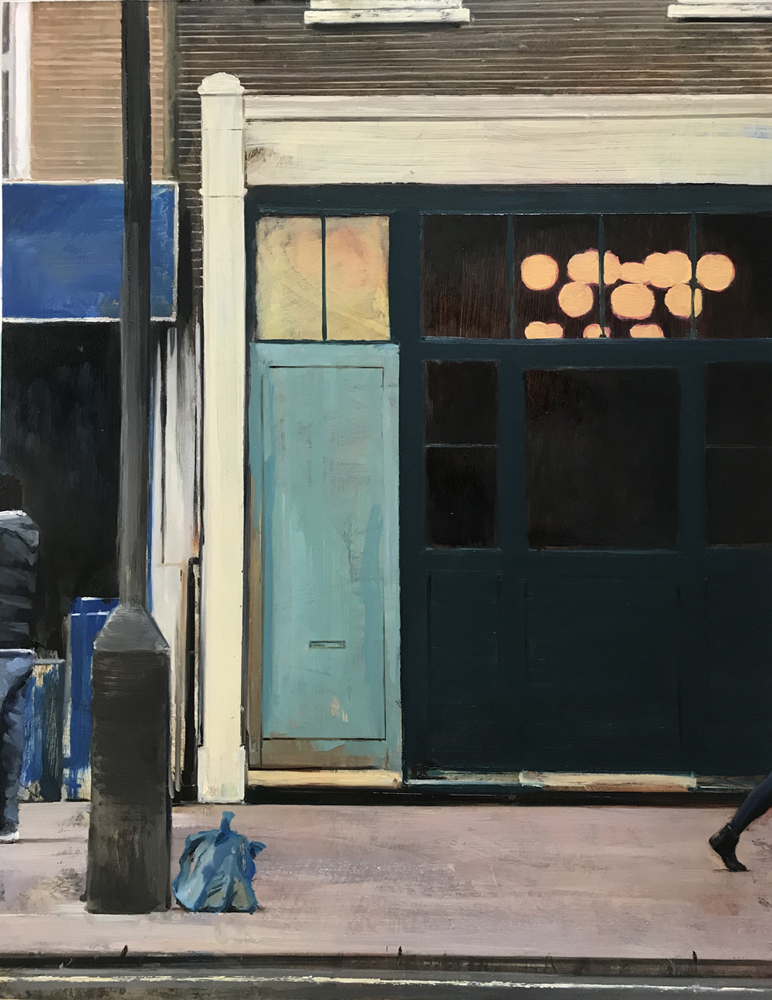
Street Painting 12 – Oil on Panel – 48×61 cm
Edward Hopper’s use of the solitary figure in the urban landscape and his painting of light as a tangible thing has also influenced my work. Shadow and contrasting light intensify the mood in a piece.
Take paintings of surf, discuss.
The seascape
The surfers
What influence does your Jamaican background have on these paintings?
Painting the sea in these works was very different to the beach paintings. I wanted a lot more movement in these and a lot of paint was flicked and thrown at the surface to make the turbulent surf.
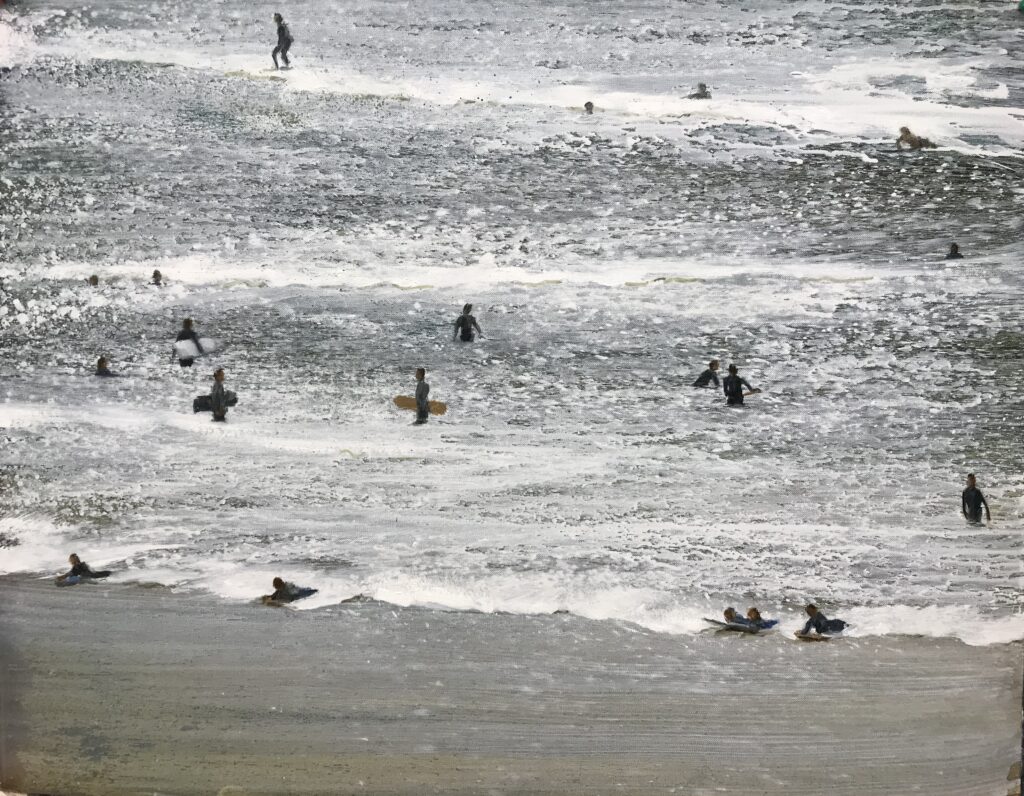
Surfers 1 – Oil on Paper – 50×65 cm
I don’t remember seeing anyone surfing in Jamaica. My surf paintings are inspired from time spent on the coast of North Cornwall. In my childhood I often stayed with relatives there and then my parents eventually retired there. It’s a place that is close to my heart.
I’m not sure Jamaica has much direct influence on my painting. My parents left there when I was 19 and I haven’t been back since. I often think about returning and it would be very interesting to see how it might change my painting now.
Your drawings are of strangers in public spaces comment on:
How you do this work?
The combination of people resting in hectic spaces.
I was between studios and homes for nearly a year in 2010-2011. I wasn’t homeless but I felt adrift. To continue working on my practice and to develop my drawing skills I went out into the city looking for people who sat still long enough for me to draw them.
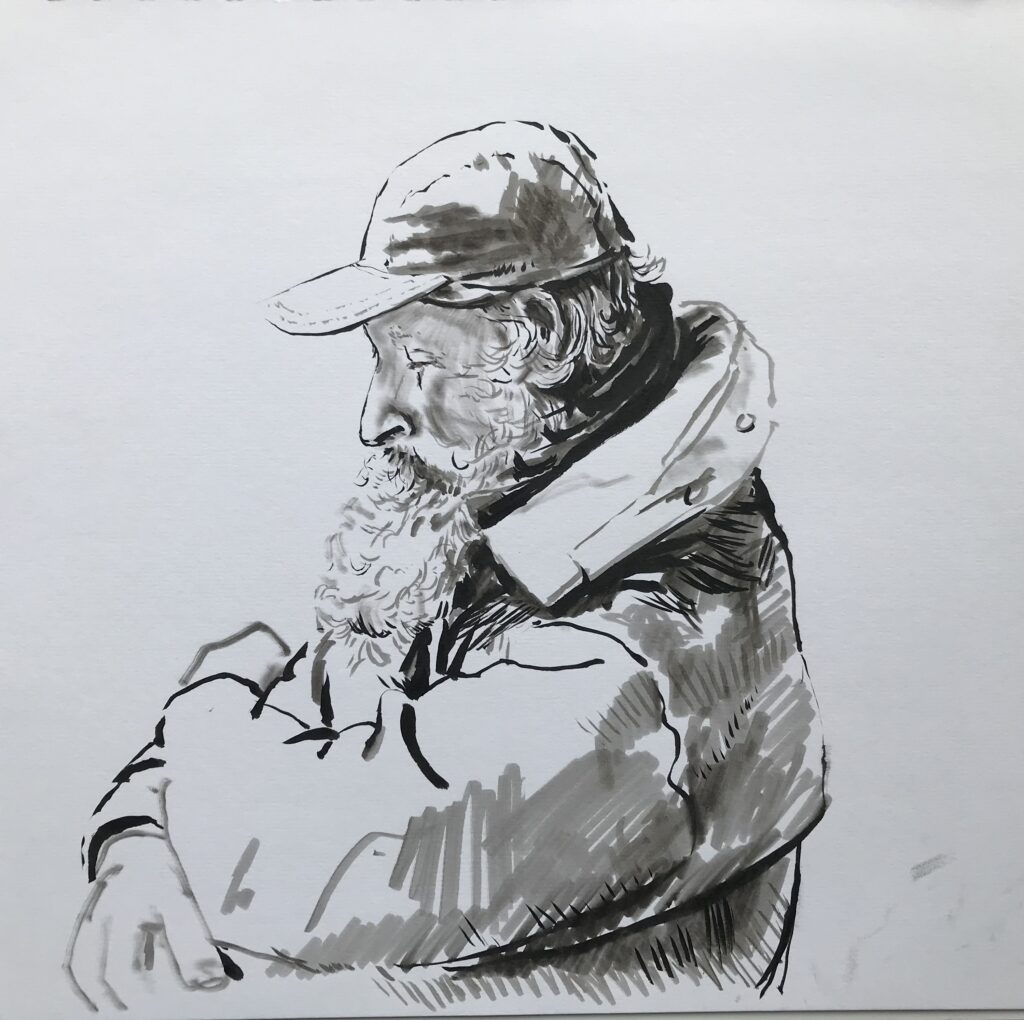
Drawing Trafalgar Square 4- Brushpen on Paper – 29×29 cm
When it was warm enough, I found people who sat quietly in Trafalgar Square and when the weather turned, I went to the Royal Festival Hall on the South Bank.
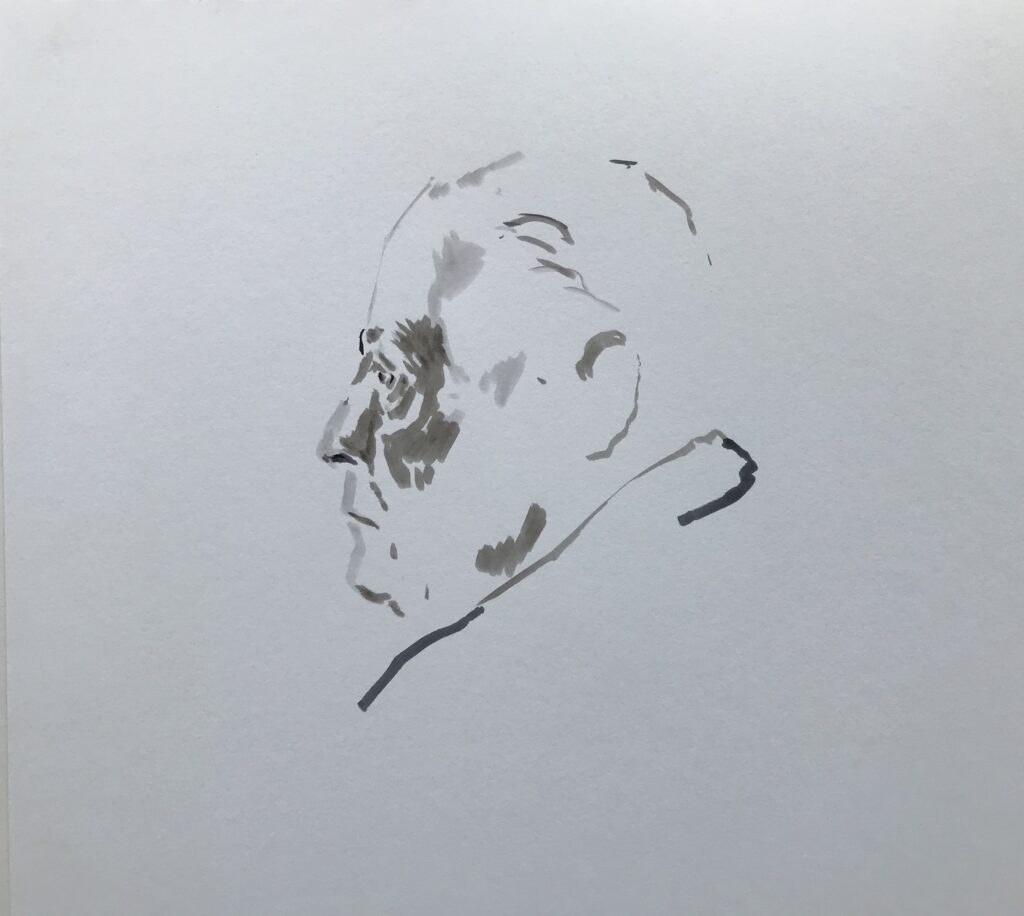
Drawing Royal Festival Hall 11- Brush Pen on Paper – 29×29 cm
This exercise was great for me because there was no way of knowing how long the subject would stay in position. It meant I had to work really fast and with total concentration. I didn’t ever ask permission from the subject and tried not to be observed because I wanted to capture a natural state of ease without any self-awareness. The photographer Philip-Lorca di Corcia did a similar thing in Time Square in New York.
Expand on the technique you use in your drawings:
Paper
Time
Where the details need to go and why?
These drawings were made with grey brush pens of varying tonal values. I’d hold 5 or 6 in my hand and start from the eyes; I think Lucian Freud did this working out from there. As I mentioned earlier, I worked at them really fast but sometimes I only had time to get the eyes in before they moved away.
You paint self-portraits. How does this differ from painting others?
To be honest I don’t paint many portraits, self or of others. The self-portrait on my website is a rare example. My drawings of people in public spaces are more oblique. When a subject presents themselves to be drawn or painted, they can often become performative as they sit, and this undermines my interest.
Give some insight into your landscapes use a drawing and a painting to discuss each medium.
I regard my photographs as drawings or sketches for a painting. I often use the images from several different photographs to make a painting but will plan out the combining of these images directly onto the painting.
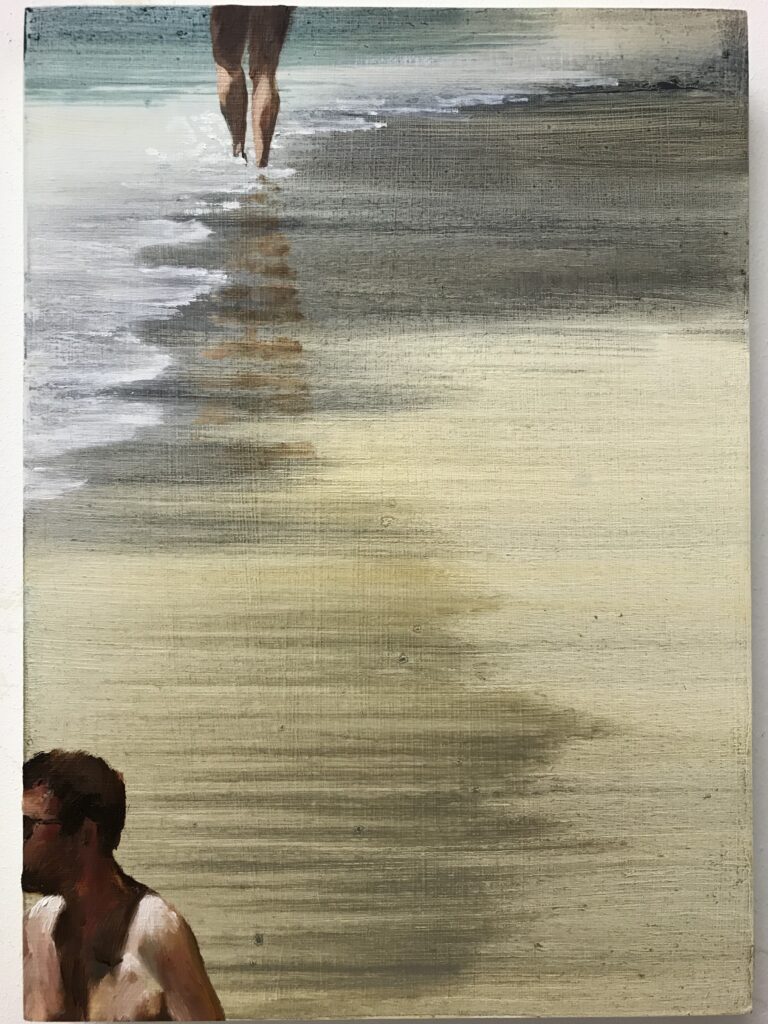
Beach – Oil on Panel – 28×20 cm
I hardly ever sketch. If I make a drawing it’s for its own sake not as a plan for a painting. Only once or twice in the last few years have I made a drawing to develop a painting.
You have work in Art Car Boot Fair. Explain how this sale works and its importance during the pandemic.
The Art Car Boot Fair is great fun and brings together between 50 and 100 artists of varying notoriety, literally selling art from the boots of their cars. It happens once or twice a year in London and at different seaside towns in the Summer and is a way to sell art direct to the public in a street market type environment. I have sold small paintings on paper which I have made specifically for the Fair and it is great way to meet other artists and Instagram friends.
Sadly, due to the pandemic the Art Car Boot Fair planned for July this year isn’t happening.
I received information yesterday (25th July 2020) that The Viral Art Car Boot Fair will be taking place on 20th September. As the name suggest it will be a virtual fair in response to the pandemic and I will be taking part. Here is a link to the ACBF’s website. Notice of the September fair isn’t up yet. https://www.artcarbootfair.com/ This an image of one of the small paintings on paper which I sold at the last ACBF in December 2019. (Floating Man).
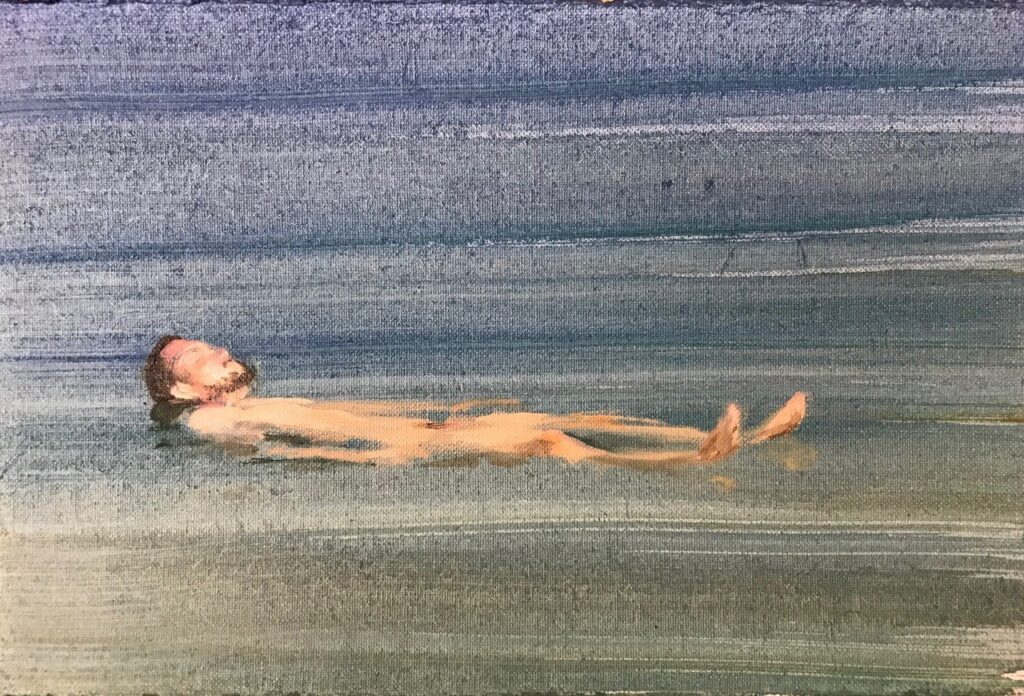
Floating Man – Oil on Paper – 16×25 cm
Has the pandemic affected your work and if so how?
I believe that creativity is about adapting to and using change for positive ends, I respond well to change as I find that it brings new ways of thinking and working, such as my drawing in 2010/11. As a result of the pandemic I am in the process of moving my studio back to my home. I am lucky to have the space to do this, but the new work area is smaller, and it will inevitably change my practice. Hopefully for the better.
I agree with many other painters and artist friends, that the lockdown didn’t generally change our practice much. Spending the day, hermit like and alone, focusing on our work is what we do in normal times.
Not being able to visit galleries and physically see others work maybe has a plus side too. Living in London there is generally so much to go and see, it can be very distracting. So, having an enforced break from that has been good for my focus.
Cavaliero Finn, one of the galleries that show my work were due to show my work in their gallery in May. Because of the pandemic they put the show online which proved successful.
I’m quite an active Instagram user and over this period it has been interesting to see how it has developed as a platform for artists to sell directly to collectors.
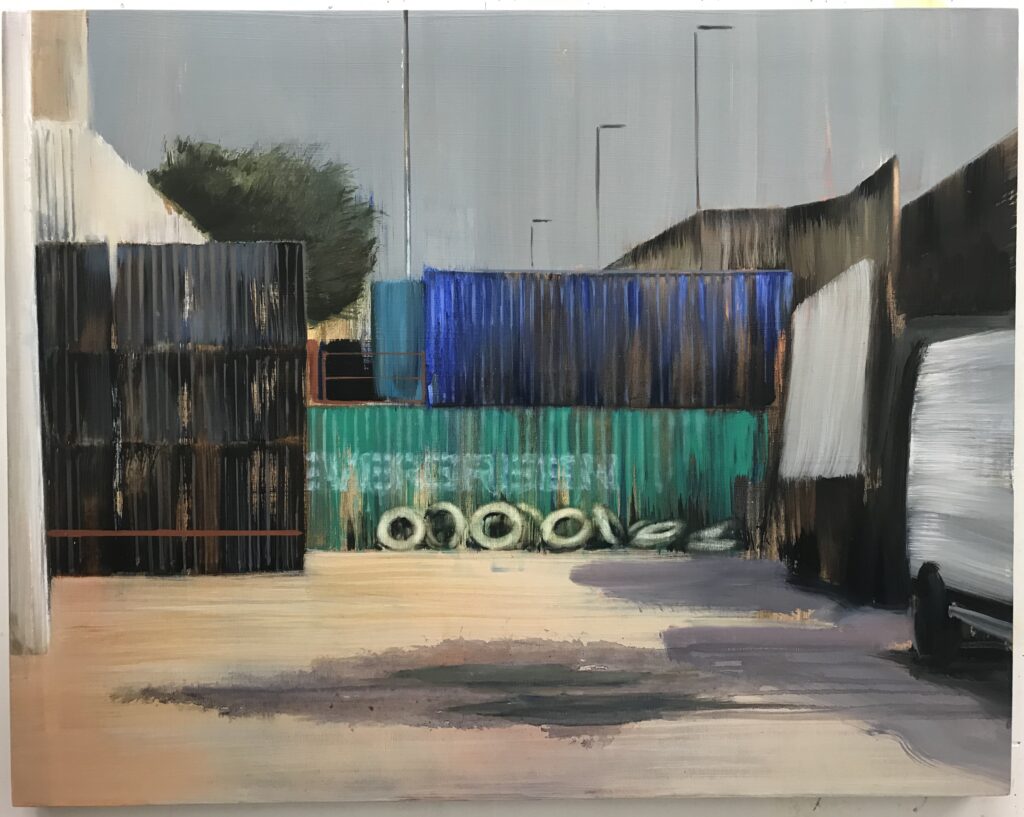
Evergreen – Oil on Panel – 49×65 cm
I think I and other artists have adapted well to the crisis, but it will be good when we can return to a more physically interactive world.
Contact:
David Edmond
Website – davidedmond.com
Instagram – davidedmondstudio
Deborah Blakeley, Melbourne, Australia
Interview by Deborah Blakeley, July 2020
Think a colleague or friend could benefit from this interview?
Knowledge is one of the biggest assets in any business. So why not forward this on to your friends and colleagues so they too can start taking advantage of the insightful information the artist has given?
Other artists you may be interested in:


